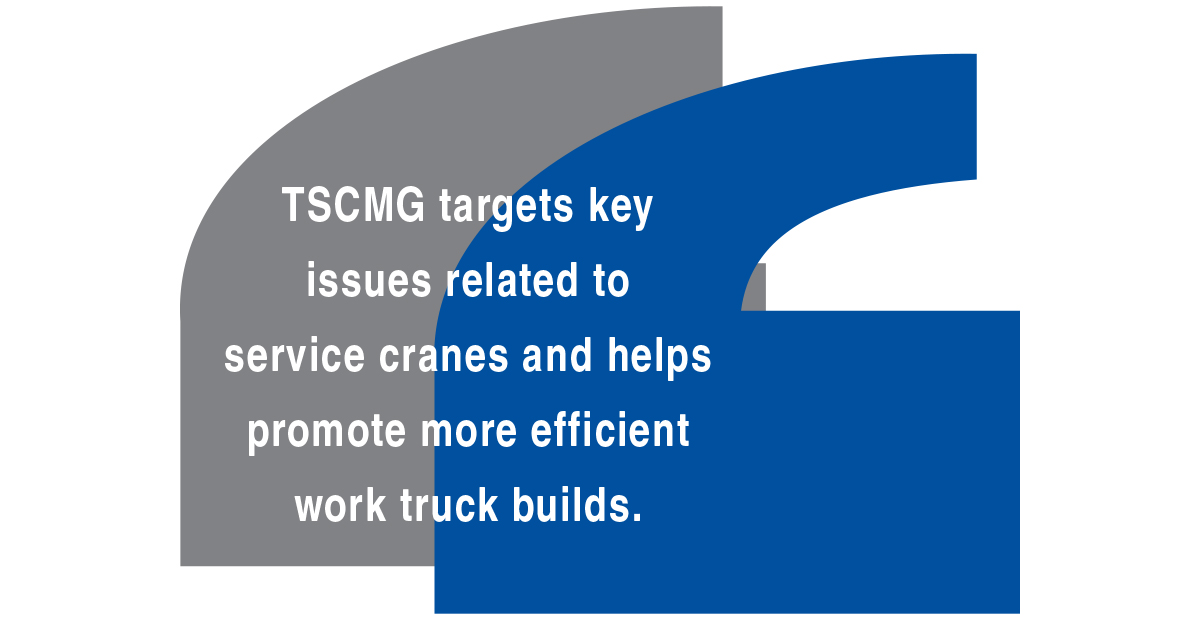This article was published in the May 2022 edition of NTEA News.
NTEA’s Telescopic Service Crane Manufacturers Group (TSCMG) was formed in 2014. It targets key issues related to service cranes and helps promote more efficient work truck builds.
Continuous development of programs to help enhance safe and efficient use of service cranes is a key priority for the group. A recently completed initiative involves a uniform inspection form upfitters can utilize to examine telescopic service cranes. This project involved incorporating elements of each participating company’s inspection form into a universal document for truck equipment upfitters to use for service cranes.

The group is in the process of completing work on the development of recommended uniform parameters for load charts, with the objective of offering service crane operators a better understanding of a uniform load chart across multiple manufacturers.
TSCMG also developed a definition for its product. “A service truck crane is identified by its telescopic boom, where the base and mast structure is not integral to the stabilizer/outrigger system. Lifting is typically accomplished via a winch (electric or hydraulic), and its functions (rotation, elevation, telescoping) are either powered or manual. These machines tend to have relatively shorter boom lengths (10–35 feet) and lower capacities (1–7 tons) as compared to other telescopic boom-fixed cab machines (e.g., boom trucks, carry deck cranes). Additionally, operations are usually conducted by the use of radio remote or pendant control with the operator standing on the ground following the load.”
How to join
Membership is open to NTEA member companies in good standing engaged in the manufacture of telescopic service truck cranes and/or an authorized national importer of telescopic service truck cranes, as defined below:
- Telescopic service truck cranes have a telescopic boom, the base and mast structure of which is not integral to the stabilizer/outrigger system.
- Lifting is typically accomplished via a winch (electric or hydraulic) and its functions (rotation, elevation, telescoping) are either powered or manual.
- They typically have relatively shorter boom lengths (10–35 feet)
and lower capacities (1–7 tons) as compared to other telescopic boom–fixed cab equipment (e.g., boom trucks cranes, carry deck cranes).
- Crane operations are usually conducted by use of radio remote or pendant control with the operator standing on the ground following the load.
For more information or to join, email Bob Raybuck (bob@ntea.com), NTEA director of technical services.